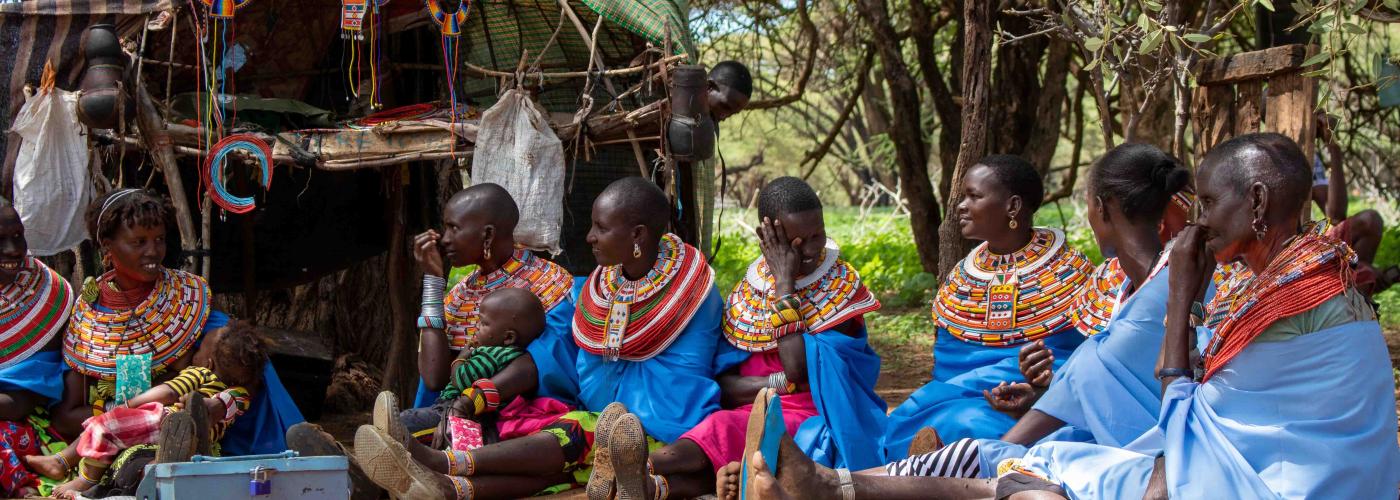In Kenya, Counties Working with Communities Bring About Stronger Market Systems Resilience
Image

In Northern Kenya, county governments have a unique responsibility to support local development, as much of their population struggles with poor access to economic markets, frequent drought, and other challenges that perpetuate poverty and food insecurity in the country’s arid and semi-arid lands. Their efforts cannot succeed without the involvement of the community and often partners like USAID. Through the USAID Resilience Learning Activity (RLA), the Agency has been helping counties self-organize, manage risk, and make decisions on how to respond to and prepare for shocks.
Under the two USAID coordination platforms, the Partnership for Resilience and Economic Growth (PREG) and the Southeastern Kenya (SEK) mechanisms, the Agency operates in nine Kenyan counties. RLA is the secretariat and responsible for the co-creation, co-implementation, and co-monitoring of joint work planning efforts. These efforts bring together county government officials and representatives from all USAID-funded implementing partners operating in the area. RLA itself operates under the USAID/Kenya and East Africa-funded Leader With Associates (LWA) award, led by ACDI/VOCA. Together, each of these USAID-funded implementing partners and county government officials convened for joint work planning sessions.
Lessons Learned from Joint Work Planning Sessions
The joint work planning efforts highlight co-creation, co-facilitation, and co-monitoring based on USAID’s sequencing, layering, and integration principles. They incorporate Kenyan county officials, other USAID implementing partners, and, where appropriate, the private sector. Communication and engagement around the sessions requires extensive planning for active participation and implementation. Additionally, RLA, through the joint work plan, identifies sector-thematic areas that support county steering groups to motivate and incentivize participants to ensure effective planning sessions.
Collaboration comes at a cost to the participants, whether in time spent or in risks taken trying something new. Any collaboration that does not lead to a “win-win” for both sides will not be sustainable or effective. For that reason, RLA used county service providers to support joint work planning initiatives because their relationship with county officials will outlast RLA. This also allows for a type of knowledge management repository through the local development organizations to learn and assist with other USAID implementing partners, allowing them to share information that will exceed the life of RLA and that of elected and appointed government officials.
Additionally, RLA found that involvement of top county officials improved participation across the board, propelling other officials to serve as county champions who motivated and energized their colleagues. Engaging county personnel with relevant technical knowledge in areas like data analytics (e.g., understanding how to use Microsoft Excel), collaboration, learning and adapting principles inclusive of leadership, and leveraging as well as improved planning, mobilization, and execution of the joint work plan. Among the biggest challenges facing the group was aligning activities against each county’s integrated development plan, or annual workplan, and budget process. County funds are released by the county assembly, and the timelines of these distributions can impact the start/stop times of the county’s engagement of the joint work plan based on the timeline of their funds being distributed.
Scaling Up and Reaching New Sectors
County-led, county-owned joint work planning is evolving and becoming more inclusive of not only development partners but also other sector players—from civil society organizations and donors to private sector partners. However, a streamlined approach that assists in identifying a set of monitoring and evaluation indicators that align with each entities reporting structure, helps create a standard template. This template generates meaningful engagement of diverse partners throughout development processes.
While monitoring and evaluating the process is extensively done, more must be done to ensure consultations are conducted in a way that uses the collective impact approach for the benefit of local communities by shaping priorities and tracking implementation. All participants need to focus on areas of mutual interest and have the joint work planning sessions be inclusive of all partners.
Read more about lessons learned and recommendations for how to scale-up future success of the joint work planning model in the full study, conducted by RLA.


